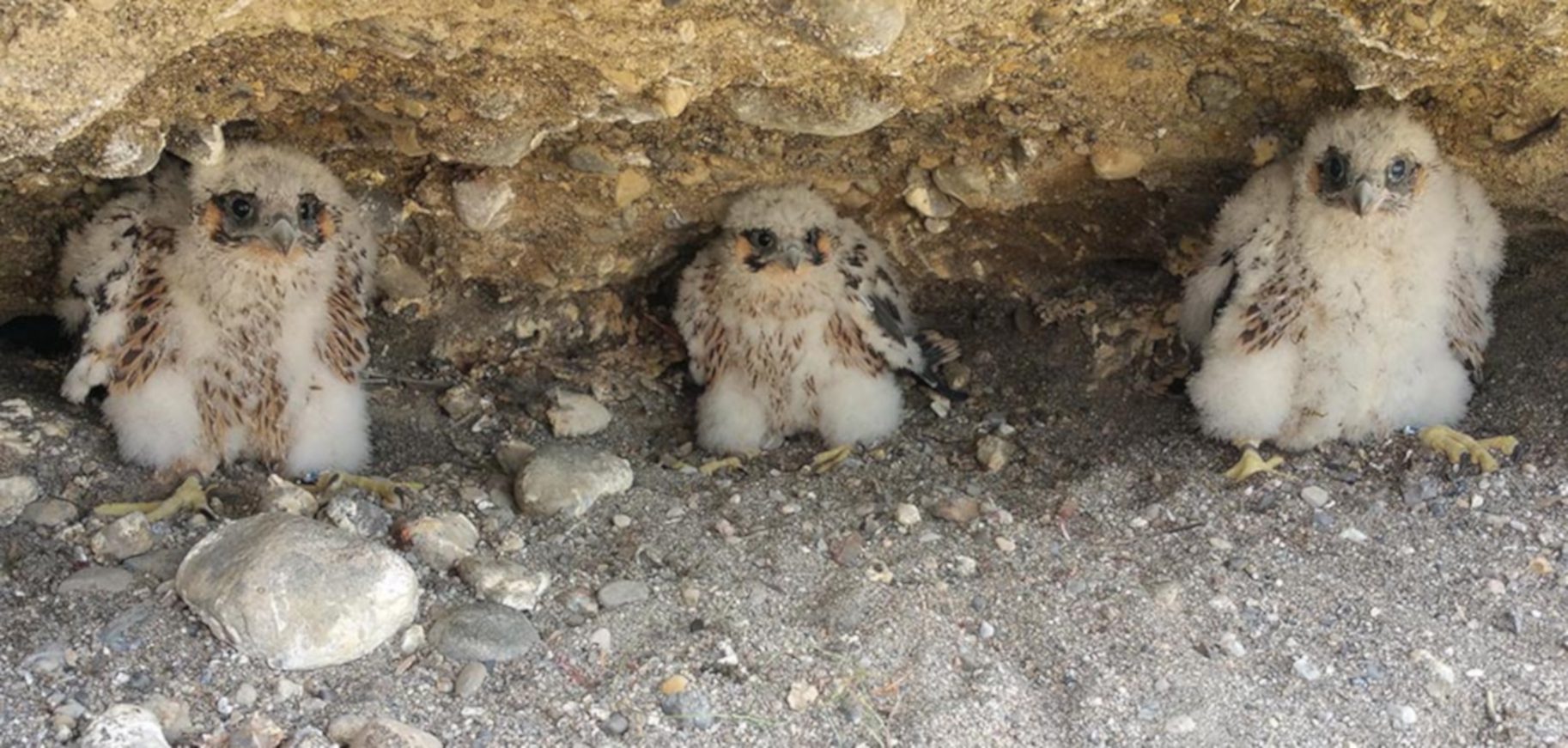Private: Sustainability old / Bio-Diversity
Bio-Diversity
The impacts from ground disturbance associated with quarrying can be addressed through the Environmental Management Systems so that extractive sites do not reduce bio-diversity, but are managed to greatly enhance and protect bio-diversity.
Quite often the land use prior to extraction is intensive agriculture, where species diversity is low due to spraying. During extraction and post closure, exposed quarry faces are ideal breeding and feeding sites for Peregrine Falcons, indeed these birds are not uncommon at a number of the Kilsaran quarries. A clutch of peregrine chicks are photographed above at a Kilsaran sand and gravel pit. National Parks and Wildlife Service (NPWS) monitor the Peregrine falcon at this site and survey the nest site as part of a study of breeding territories of Peregrine falcon. NPWS have recorded and ringed peregrine falcon chicks at this location for a number of years.
Similarly exposed faces at sand and gravel pits provide ideal nesting sites for Sand Martins, solitary bees and hunting wasps.
The provision of water bodies during the operational life or as part of a careful restoration scheme offers valuable habitat for a diverse assemblage of water beetles and other aquatic invertebrates, as well as amphibians.
Notice Nature is Ireland’s national biodiversity awareness campaign run by the National Parks and Wildlife Service (NPWS). They have issued Guidelines in collaboration with the Irish Concrete Federation for the Protection of Biodiversity within the Extractive Industry. This document entitled Wildlife, Habitats & the Extractive Industry can be accessed HERE




